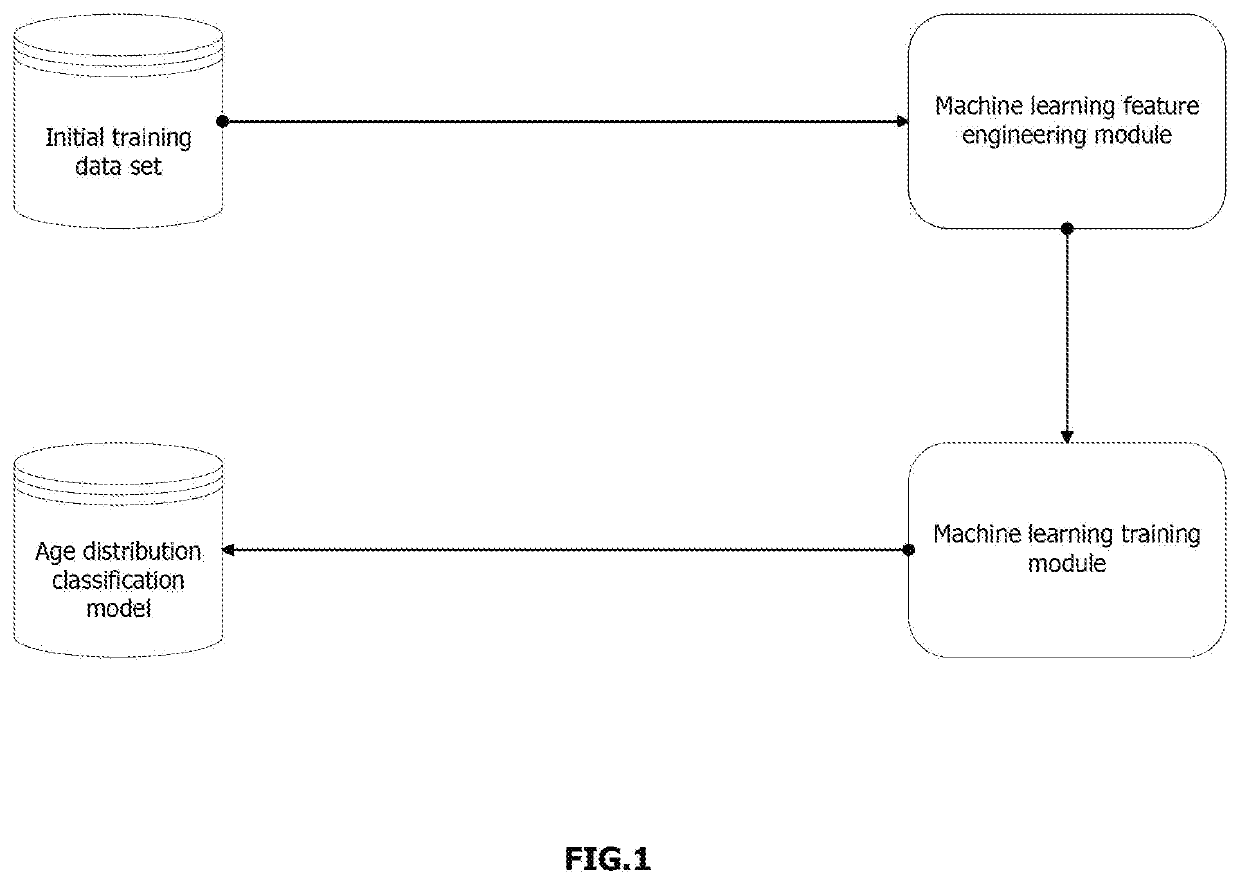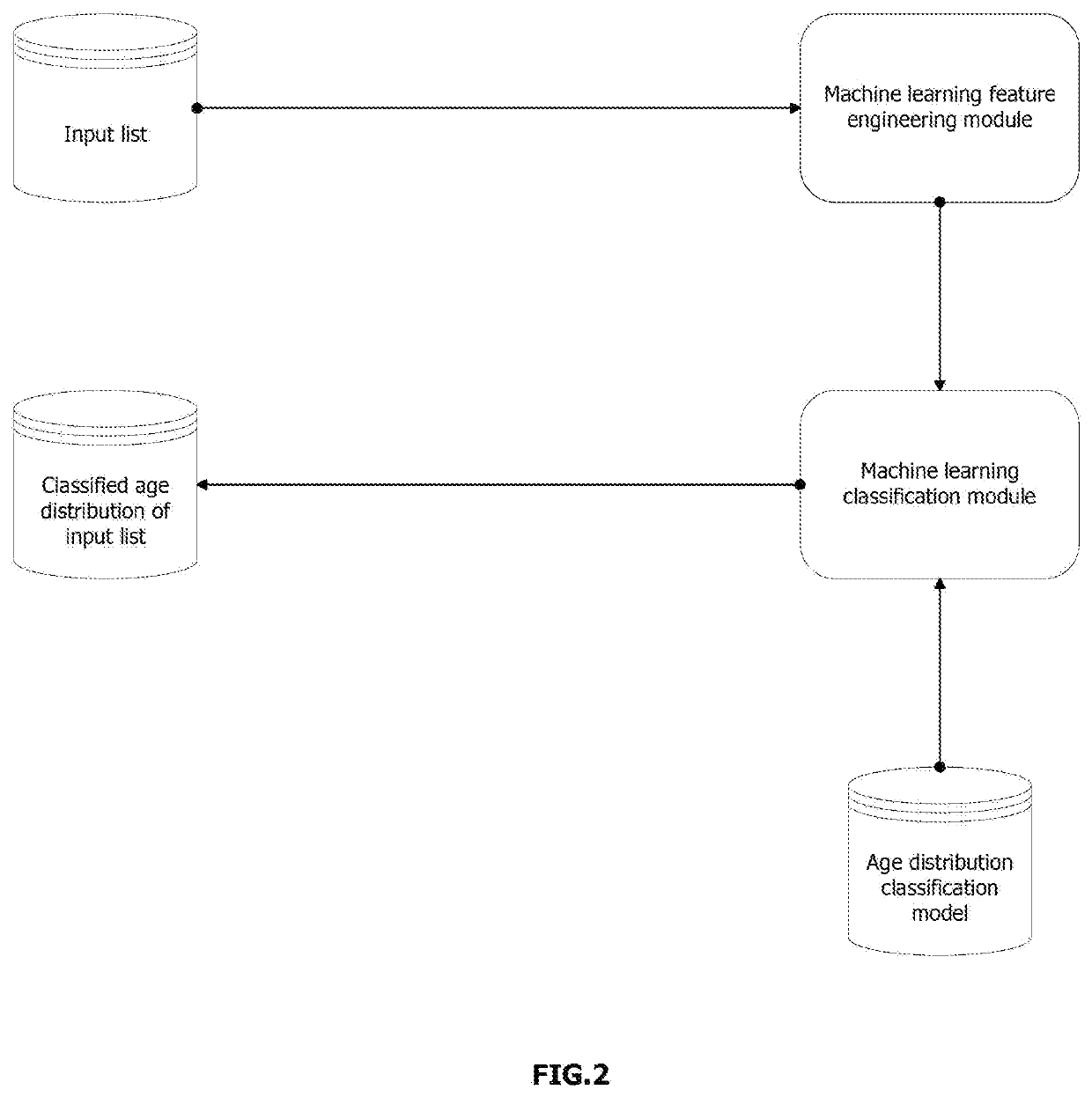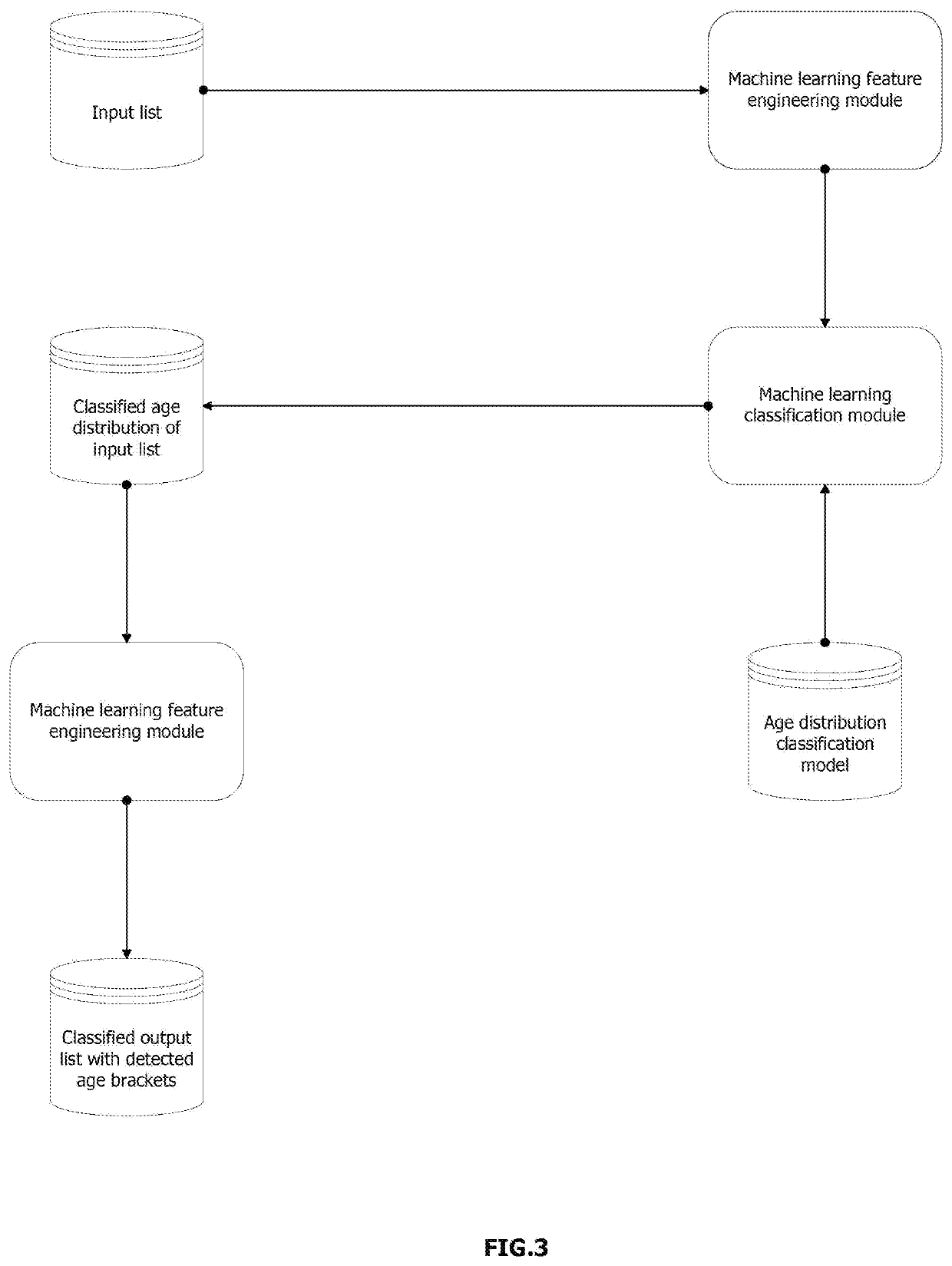Computer-implemented Method and System for Age Classification of First Names
a computer-implemented method and age classification technology, applied in computing models, other databases, clustering/classification of data, etc., can solve the problems of low coverage of input lists, customers segmentation, and solutions for obtaining additional data about consumers, and achieve low coverage
- Summary
- Abstract
- Description
- Claims
- Application Information
AI Technical Summary
Benefits of technology
Problems solved by technology
Method used
Image
Examples
Embodiment Construction
[0027]The present invention provides a method and system for a privacy-enabled process of classifying list of first names into age distribution classes, classifying individual list entries into defined age brackets and predicting its classification accuracy. The algorithm is based on supervised machine learning. The disclosure below provides detailed description of the various parts of the claimed method and system.
[0028]A number of terms are used in this disclosure. The following definitions are provided to explain the meaning of these terms.
[0029]The term platform refers to a group of software modules and storage mediums that implement the system and method disclosed in the present invention,
[0030]The term software module refers to one or more software algorithms separated logically from other software algorithms in the proposed method of the present invention.
[0031]The term storage medium refers to both in-memory, disk, databases or any other storage mediums and mechanisms that p...
PUM
 Login to View More
Login to View More Abstract
Description
Claims
Application Information
 Login to View More
Login to View More - R&D
- Intellectual Property
- Life Sciences
- Materials
- Tech Scout
- Unparalleled Data Quality
- Higher Quality Content
- 60% Fewer Hallucinations
Browse by: Latest US Patents, China's latest patents, Technical Efficacy Thesaurus, Application Domain, Technology Topic, Popular Technical Reports.
© 2025 PatSnap. All rights reserved.Legal|Privacy policy|Modern Slavery Act Transparency Statement|Sitemap|About US| Contact US: help@patsnap.com



